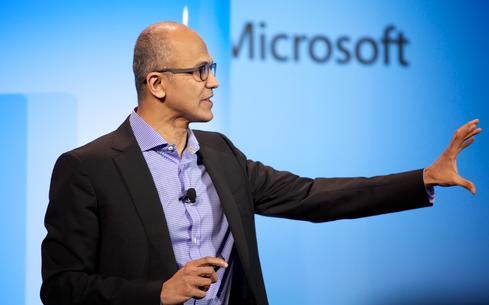Microsoft's Mobile First, Cloud First Strategy, Explained
Microsoft CEO Satya Nadella's plan to juggle Windows, cross-platform services, and the Internet of Things is coming into focus.

Microsoft tools to manage, authenticate, and secure devices, regardless of OS, and for developers to use Azure and Visual Studio, even for non-Windows apps.
In Microsoft's ideal world, more people would buy Surfaces, but even if the rumored Surface Mini is a hit, Windows will never be for tablets what it was for PCs. Nadella knows millions of iOS, OS X, Chrome, and Android users will likely never come back to Windows but still need Microsoft software. The cross-platform opportunity is too big to ignore, even if it strengthens Windows competitors.
Is this cognitive dissonance? Not if Microsoft makes more money from this dual strategy than it would focusing on either one or the other.

Nadella's tenure began auspiciously, but with Windows still an also-ran on mobile devices, challenges remain.
IoT is a mega-bet, and Microsoft would be foolish to exclude Windows from the party. Even if IoT achieves only a quarter of the most optimistic projections, it will be a profoundly disruptive force, a tide that raises many ships and encompasses everything from wearable devices to smarter city infrastructure. In the PC world, Microsoft made its money by snaring around 90% of the market. In the IoT world, the company could generate a lot more cash with a lot less market share.
The cross-platform opportunity is a mega-bet too -- and that's the point. When the bets are this large, Microsoft can afford for one to lightly infringe on the other. The company's focus is no longer the preservation of sacred cows; it's about synergies.
Microsoft doesn't need to match Apple's smartphone sales to become the next decade's biggest IT player, but it needs a critical mass of users across every sphere -- datacenters, offices, consumers, professionals, wearables, embedded systems, PCs, tablets, phablets, smartphones, you name it.
"This is gold rush time," Nadella said. "And when it comes to that, we have the broadest SaaS solution and the broadest platform solution. That combination of those assets doesn't come often."
Indeed, at the heart of the synergies sits Azure, the cloud platform that supports Microsoft's services, and which benefits from new users wherever they come from. If you're using Skype on a Surface, Office on an iPad, or outlook.com on an Android device, you're feeding Azure all the same. It certainly doesn't hurt that as Azure grows more reliable and fully featured, it's also become a platform for others to build their own clouds.
Azure services such as Office 365 represent a strategic shift from one-time licenses to subscriptions. During the earnings call, Nadella linked subscriptions to wide-ranging benefits, such as apps and advertising, that create a long-tail revenue effect around each user. He pledged to develop a holistic subscription monetization strategy that ties revenue to usage.
Nadella singled out Office 365 as a gateway to additional services. He and CFO Amy Hood noted that once customers adopt a cloud service, they tend to not only renew the original subscription, but also purchase others. This echoed Nadella's earlier contention that Office will become "the UI for data"; that is, because so many people use Office 365 for spreadsheets and charts, it's a natural home for PowerBI's visualization and analytics tools.
"When you look at the [lifetime value of a customer], we will be better off for many reasons, including financially, when a person moves to the subscriptions," Hood said during the earnings call. She added that the company will succeed only if products become useful every day, a goal she characterized as "far easier in a cloud world than it is on prem."

Former Nokia CEO joined Microsoft in the acquisition-- but what happens next?
To maximize these synergies, Microsoft must overcome numerous obstacles. Surface sales are still weak, and though Nadella has made a case that Windows should be on mobile devices, he hasn't explained why Microsoft needs to make its own hardware. The just-closed Nokia acquisition presents a similar challenge but on a Sisyphean scale. It ushers 25,000 new employees into Microsoft's ranks, inflating the company's workforce by around a quarter. It also means Microsoft is suddenly in the business of selling forked Android phones, and turning them into a Windows Phone 8.1 feeder system.
It additionally remains to be seen if Windows XP's end-of-life deadline leaves any lasting fallout, if cloud services can overcome persistent privacy concerns, and whether Microsoft can outmaneuver competitors. But based on Nadella's attitude the last few weeks, if Microsoft missteps, it won't be for lack of big, ambitious bets.
What do Uber, Bank of America, and Walgreens have to do with your mobile app strategy? Find out in the new Maximizing Mobility issue of InformationWeek Tech Digest.
About the Author(s)
You May Also Like







